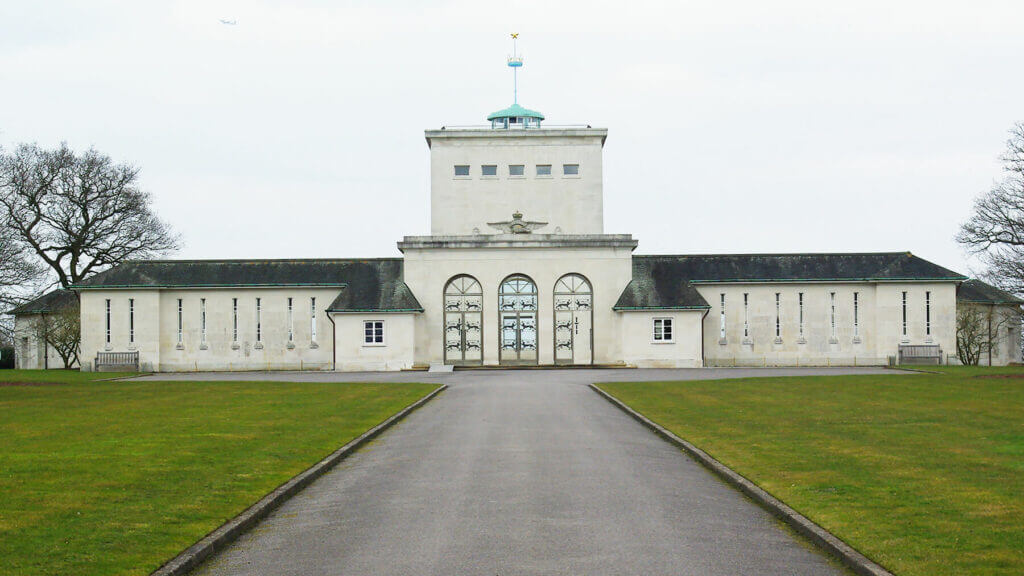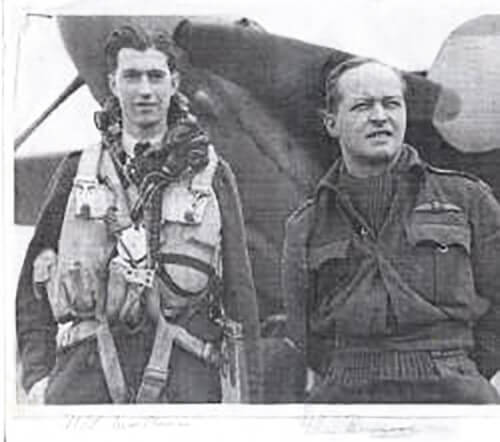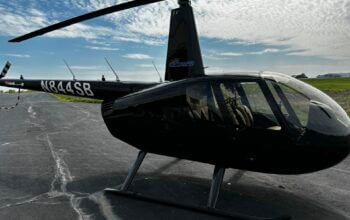Estimated reading time 7 minutes, 1 seconds.
The Runnymede Memorial overlooks the River Thames on Cooper’s Hill at Englefield Green between Windsor and Egham, United Kingdom, 6.4 kilometres from Windsor, in Surrey.

Behind its arched doorways are plaques bearing the names of some 20,000 allied aircrew who gave their lives during the Second World War, and whose final resting places are unknown. To this day, efforts are ongoing to investigate any leads that might identify the locations of these heroes.
Royal Canadian Air Force 406 Squadron, was stood up on May 10, 1941, at Acklington, U.K., as a Night Fighter Squadron. 406 is among the many RCAF squadrons that lost personnel in the fight for the liberation of Europe. This is their story.

As the 406 Squadron historian, and with our 75th Anniversary in full swing, one of my goals – our goals – was to create as large a database as possible of documentation relating to our unit. What began as a digitization project, however, quickly turned into investigations of mysteries more than 70 years old – unlocking some, and bringing new questions to light.
As of November 2015, the names on the list of our fallen totalled 28. These names are engraved on our honour roll and are displayed in a place of prominence, greeting all who pass through our doors and reminding us of the serious nature of our chosen service.
As our research began, however, it soon proved that list to be incomplete. The further we investigated, the more names appeared, bringing our list of fallen to 38, including three personnel killed in the 1954 crash of a B-25 Mitchell in Saskatoon, Sask. As we discovered these names, and brought to life their stories, we noted that we had had only the locations of 28 of their final resting places. The others, our “Lost Boys,” are listed only at Runnymede.
Our commanding officer coined the phrase “Lost Boys.” They were lost in the fog of war, with only plaques: no graves; no headstones. Or were they? In the process of accumulating as much information as we could, we stumbled across some startling information. Records found in the personnel files of our fallen began to shed light on possible answers.
The first success was that of the resting places of Flying Officer Green and Pilot Officer Hillyer [Royal Air Force (RAF)], shot down on July 25, 1944. They weren’t lost at all; their resting places were recorded but had not been passed to the proper authorities. Case closed, and our hope of more success strengthened.
On March 4, 1945, we lost Flying Officer Oswald, and Pilot Officer Kenneth Bradley Hicks, over the Zuider Zee, in Holland. Oswald’s body was recovered and positively identified. On that same day, another fisherman recovered the body of an RCAF Observer (Navigator), Flying Officer rank. The research teams, after ensuring no other missing airmen could be linked to that body, concluded that it must be that of Pilot Officer Hicks.
Sadly, it appears that none of the supporting documentation and reports made it to the Commonwealth Graves Registration Commission (CWGC), which declared in 1950 that there was no evidence of Hicks’ remains, and so he was declared lost at sea. We will be submitting all of the found documentation with the hope that the CWGC will accept the findings and list Pilot Officer Hicks’ resting place at Amersfoort Cemetery, Holland.
A month short of the war’s end, 406 Squadron lost one of its most experienced crews, Flight Lieutenants Thomas William Trewin and John Ballentyne Kennedy, on a Ranger Sortie to the Altenburg region of Germany.
In 1948, the Berlin detachment of the RAF Graves Unit received word of a crashed Mosquito, with the crew buried nearby. The team had a list of missing RAF crews, not RCAF. With but one missing Mosquito crew from 142 Pathfinder Squadron, RAF, the assumption was made that the 142 Squadron crash site had been located and the details submitted accordingly. The CWGC either did not receive the information, or denied it. Accordingly, 142 Squadron’s crew of Flight Lieutenant J. Pudsey, DFM (Distinguished Flying Medal), and Pilot Officer K.R.D. Morgan, DFC (Distinguished Flying Cross), are still listed on plaques at Runnymede.
After painstaking research and through close cooperation between 406 and 142 Squadrons, there is almost no possibility of the bodies being Pudsey and Morgan. This leaves us with only Trewin and Kennedy unaccounted for. Efforts are underway through entreaties to former squadron members serving in Europe to investigate the crash site to determine if enough wreckage remains to positively identify it as a Mosquito Night Fighter Mark XXX, of RCAF 406 Squadron.
In a letter to the family of one of our fallen, our first Canadian commanding officer, Wing Commander Robert Carl “Moose” Fumerton, wrote:
Your son’s name and memory will be forever honoured by all of us for the unselfish sacrifice he has made in the cause of freedom and in the service of his country. We shall forever remember them.
We will have to accept that some of our “Lost Boys” will remain lost, but we must try to remove as many as possible from that list. The members of 406 Squadron today remain committed to honouring this pledge, to finding our Lost Boys and ensuring they are never forgotten.
Warrant Officer Dave Rowe is a member of 406 Maritime Operational Training Squadron.
Royal Canadian Air Force 406 Squadron’s Lost Boys:
Pilot – Flight Lieutenant William Ronald Rutherford Sutton, July 25, 1944
Navigator – Flying Officer George Bishop, July 25, 1944
Navigator – Flight Lieutenant Peter Talbot Reid, December 11, 1944
Pilot – Flying Officer James Francis Lawless, December 11, 1944
Pilot – Flying Officer Charles Ernest Sleeman Hamlyn-Lovis, February 8, 1945
Pilot – Flying Officer Ralph William Donovan, March 4, 1945
Navigator – Flying Officer Victor Grant, March 4, 1945
Navigator – Pilot Officer Kenneth Bradley Hicks, March 8, 1945
Pilot – Flight Lieutenant Thomas William Trewin, April 5, 1945
Navigator – Flight Lieutenant John Ballentyne Kennedy, April 5, 1945









Very interesting…hopefully all will be identified some day …RIP to all …GREAT STORY .
HI:
I’m not sure if this is what you are interested in.
i searched for Burgess, Raymond Richard on “They Shall Grow Not Old” and found where he is buried in the Communal Cemetery, Rialle, Loire-Atlantiqe, France.
There is no photo of a grave marker.
“J7612 Flight Lieutenant (No. 406 Lynx Squadron RCAF pilot) Raymond Richard Burgess (b.1916) of Biggar was KIA 19440725 and is buried at Riaille communal cemetery, Loire-Atlantique, France. Burgess’ Mosquito crashed at La Provestière on the second bloodiest day of the war for Canada (after Dieppe). In the battle of Verrières Ridge, the Canadian Corps suffered 1,500 casualties, including 450 dead, among them Mosquito pilots Burgess and RL Green of Vanguard, see Green Lake. Raymond spent a year studying engineering at Gonzaga University, Spokane, Washington, and played goal for the Saskatoon Quakers, Trail Rangers and Nelson Leafs. He was active in the Prince Albert and Battleford Volunteers for three years and was working as a store clerk when he enlisted at Saskatoon late in 1940. His brother Ronald served overseas with the Army. They were the sons of Albert Richard and Sadie Beatrice (Holland) Burgess who came from Surrey, England, and Trenton, Hastings co., Ontario, respectively””.
Courtesy of the Saskatchewan Virtual War Memorial.
As my father,F/L Donald A. Gillis flew with 406 Squadron out of RAF base Manston in Kent, and his brother Ivan died in Hudson crash over Sable Island on a rescue mission out of Shearwater,N.S. I was very interested indeed in this story. 406 now operates helicopters out of Shearwater, and my son-in -law is an aircraft maintenance engineer working on the cyclones there so ,we have a very close connection with the squadron. Good luck on your search.
Bruce Gillis,
Paradise,N.S.
As I understand it my father, F/L D.A. Gillis was the pilot of second Mosquito XXX No D of 406 Squadron scrambled at 1AM in the morning of March 4 to intercept German aircraft approaching the English coast. F/O Ralph Donovan pilot and F/O Grant (RAF), navigator, were the crew of the first Mosquito scrambled. Their aircraft never returned, and as far as I am aware no one has been able to determine for sure what happened to that aircraft and its crew. I have some additional details relating to the events of that night that I would be happy to share with Warrant Officer Dave Rowe, if he would please contact me, in the hopes that this information might be able to help resolve this mystery.
My father served with 406 squadron from the first to the last day, he volunteered in 1939 . He didn’t say much about his service. I once overheard him saying that he was a pallbearer at a funeral for a squadron mate (maybe) whose father was some kind of bigshot in Canada. The aircraft that this guy was in crashed and burned his father was in England at the time and was going to attend the funeral and they had to put rocks in the coffin so there would be a semblance of weight in the coffin. Sad eh? Also after the war in Europe was over they had a parade and the commanding officer announced the squadron would move to the far east. Anyone wishing to volunteer please take one step forward and all the men stepped forward as one.
I’m trying to find information of my father, William Leslie Burgess.
He flew a spitfire in WWII, don’t know what year, probably 1944.
He was a member of the Windsor Squadron. He signed up in Regina, Saskatchewan. He flew in Africa. He was born on May 1st, 1920 .Does anyone have any info on him??
Missy,
I believe my grandmother knew your father. She was from Windsor and I have a couple of pictures of a Bill Burgess from the war. One of them is in the cockpit of a Spitfire. If you are interested I can send you digital copies of them. I was searching the name from the pictures and found this post. Anyway if you want them email me at stevenson.john@gmail.com
Regards,
John
My father (John Ashley “Ash” Bradley) was a mechanic with the RCAF 406 squadron during WWII. He told a few stories, only when I was in my tweens. He passed in 1985 when I was 19. I have many photos that he had taken and keeping with the family tradition, no markings to identify, who, what, where, when… * sigh* Thank you for doing what you are doing – although I am posting in 2020, I do not know if there are any updates to your quest.
Hello Stacey,
I’m the current Squadron Chief Warrant Officer of 406 Sqn in Shearwater NS. We have very few pictures of our mechanics that served during WW11 with 406 Sqn. Would you be willing share copies of your photos so that we could display them in a place of honor for our current and future members to see. Thankyou.
My father,F/L William (Bill) Boak flew with the RCAF 406 Squadron out of RAF base Manston in Kent. He was a navigator and flew frequently with pilot Phil Etienne. My dad also did sorties with Russ Bannock. My dad was very proud of the men he served with and shared many stories of flying at night over Germany. He was awarded the Distinguished Flying Cross in 1945. He served with the RCAF until his retirement in 1971. Dad completed his final “sortie” in 2013. Miss ya’ dad.
looking for information on fl captain hugh mackenzie,mossy pilot